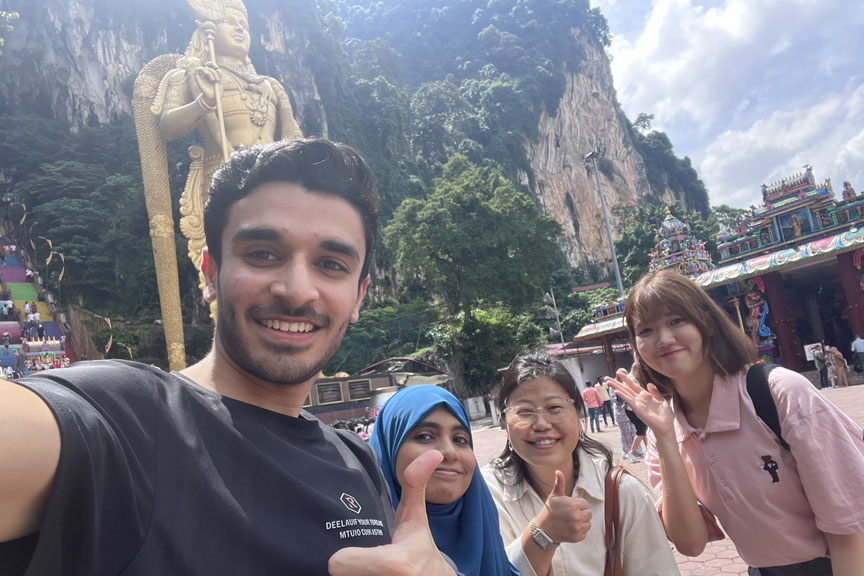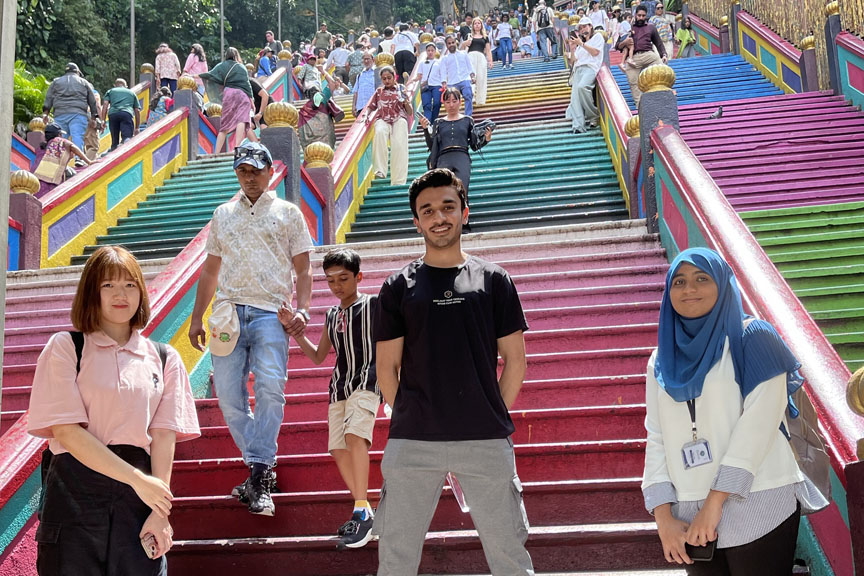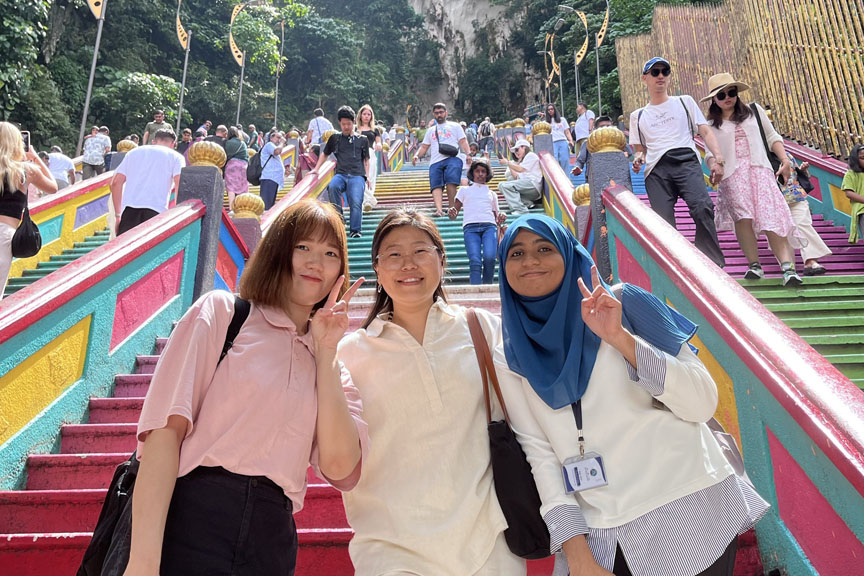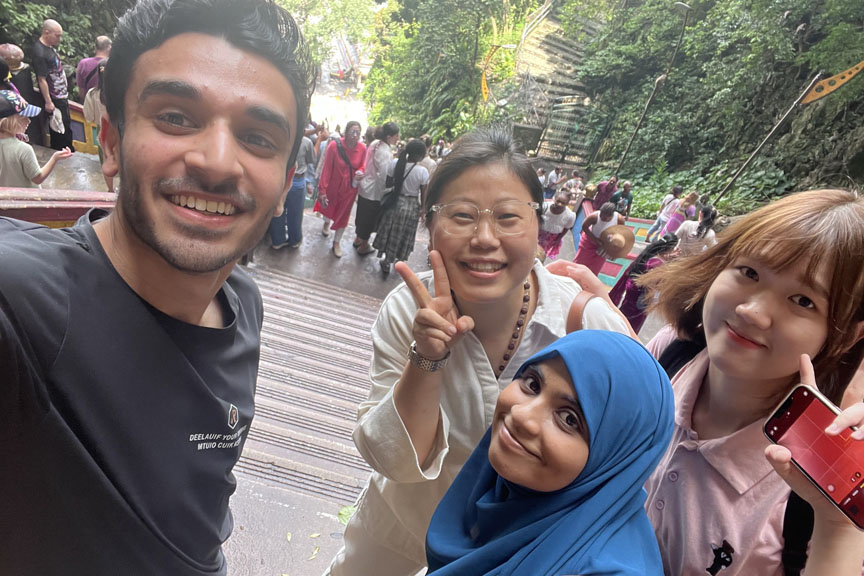Through practical observations and discussions, the students applied their theoretical knowledge to real-world scenarios, gaining a comprehensive understanding of tourism’s benefits and challenges.

Shayan Akhlaq, Fathimath Shaiha Shariff, and Yeo Saw Cheng Kathy, Asia Pacific University of Technology & Innovation’s (APU) School of Global Hospitality and Tourism (SoGHT) students, embarked on an unforgettable journey to Batu Caves, Selangor under the guidance of Dr Lazey Doma Bhutia.
This ancient limestone marvel, a pilgrimage site for Hindus worldwide, is renowned for its towering 141-foot statue of Lord Murugan and the vibrant Thaipusam festival.
As part of their ‘Geography of Travel and Tourism’ module, students explored key topics such as sustainable tourism, overtourism, and the carrying capacity of tourist destinations.
Batu Caves served as a living case study, providing students with firsthand experience to grasp these concepts.
Through this experience, they learned how geography plays a crucial role in tourism and the importance of maintaining a balance to ensure the smooth flow of visitors at any tourist destination.
They witnessed first-hand the bustling tourism scene, observing sustainable practices, understanding its economic impact, and grappling with the challenges of preserving cultural heritage amidst commercial growth.

However, the trip also served as a stark reminder of the growing issue of over tourism. The increasing popularity of Batu Caves has strained local resources and diluted the authentic experience.
Dr Lazey explained, “Batu Caves offers a practical example of tourism management. Students can observe overtourism, destination life cycle and the delicate balance between commercial interests and cultural preservation.”
Shyan Akhtaq from Pakistan and was impressed by the various sustainable practices implemented at Batu Caves, such as waste management and energy efficiency.
“We also learned about its significant socio-economic impact on the local community,” he said.

Fatimath Shaiha from Maldives emphasized the challenges of over tourism.
“We learned about its negative consequences, such as overcrowding and the erosion of local culture,” she said.
Yeo Saw Cheng from Malaysia was intrigued by the opportunity to apply his theoretical knowledge to real-world scenarios.
“We gained a comprehensive understanding of tourism, its benefits, and its challenges,” she concluded.

News & Happening
Download e-Brochures
Intake Calendar
Want to know more ?
Let’s Connect